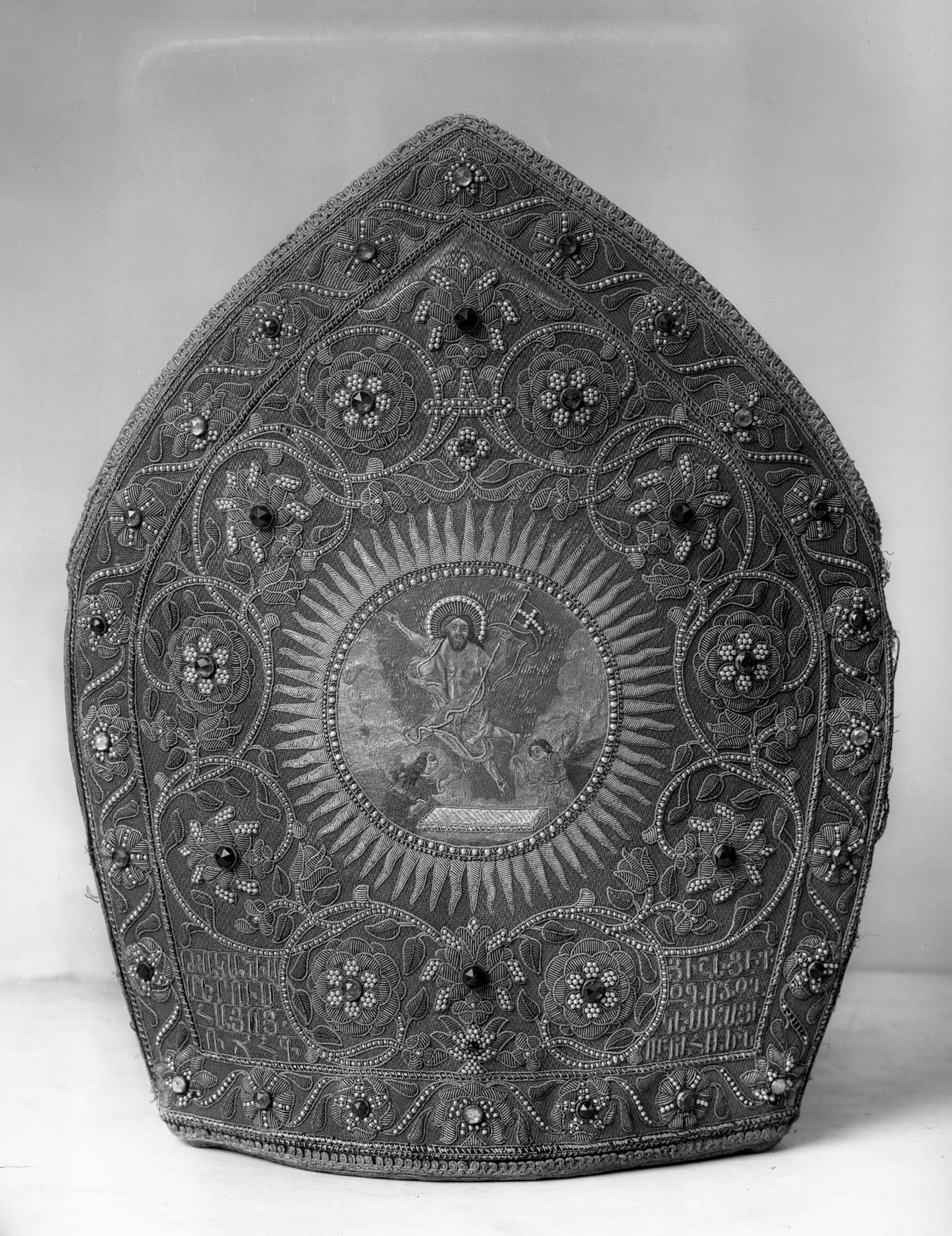Miter with the Resurrection of Christ and Coronation of the Virgin
(Medieval Europe )
A miter is a headdress worn by bishops during the liturgy. The inscription on this one states that it was made in 1724 by Abraham of Caesarea (present-day Kayseri, Turkey) and presented to the Monastery of the Virgin Mary near Ankara by the city's Armenian bishop Moses. The depictions of Christ's Resurrection on one side and the Coronation of the Virgin on the other were inspired by western European prints.
Inscription
Provenance
Provenance (from the French provenir, 'to come from/forth') is the chronology of the ownership, custody, or location of a historical object. Learn more about provenance at the Walters.
Henry Walters, Baltimore, [date of acquisition unknown] by purchase; Walters Art Museum, 1931, by bequest.
Exhibitions
| 1958 | Religious Art of the Western World. Dallas Museum of Art, Dallas. |
Conservation
| Date | Description | Narrative |
|---|---|---|
| 10/24/1958 | Treatment | cleaned; coated |
Geographies
Turkey, Galatia, Ankara (Place of Origin)
Measurements
H: 16 15/16 x W: 14 in. (43.1 x 35.5 cm)
Credit Line
Acquired by Henry Walters
Location in Museum
Centre Street: Third Floor: Byzantine, Russian, and Ethiopian Icons
Accession Number
In libraries, galleries, museums, and archives, an accession number is a unique identifier assigned to each object in the collection.
In libraries, galleries, museums, and archives, an accession number is a unique identifier assigned to each object in the collection.
83.309


